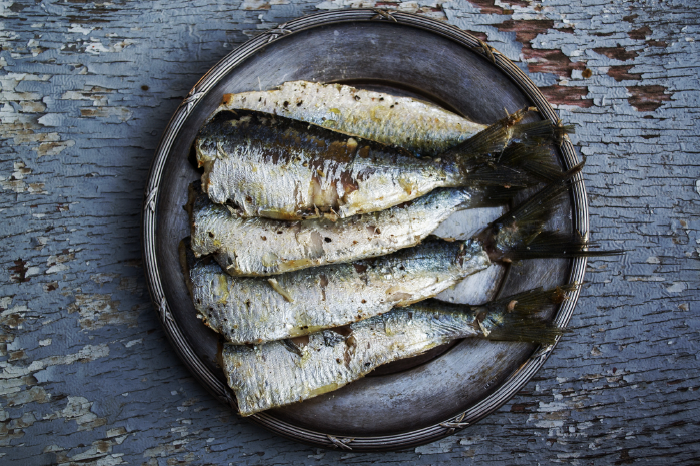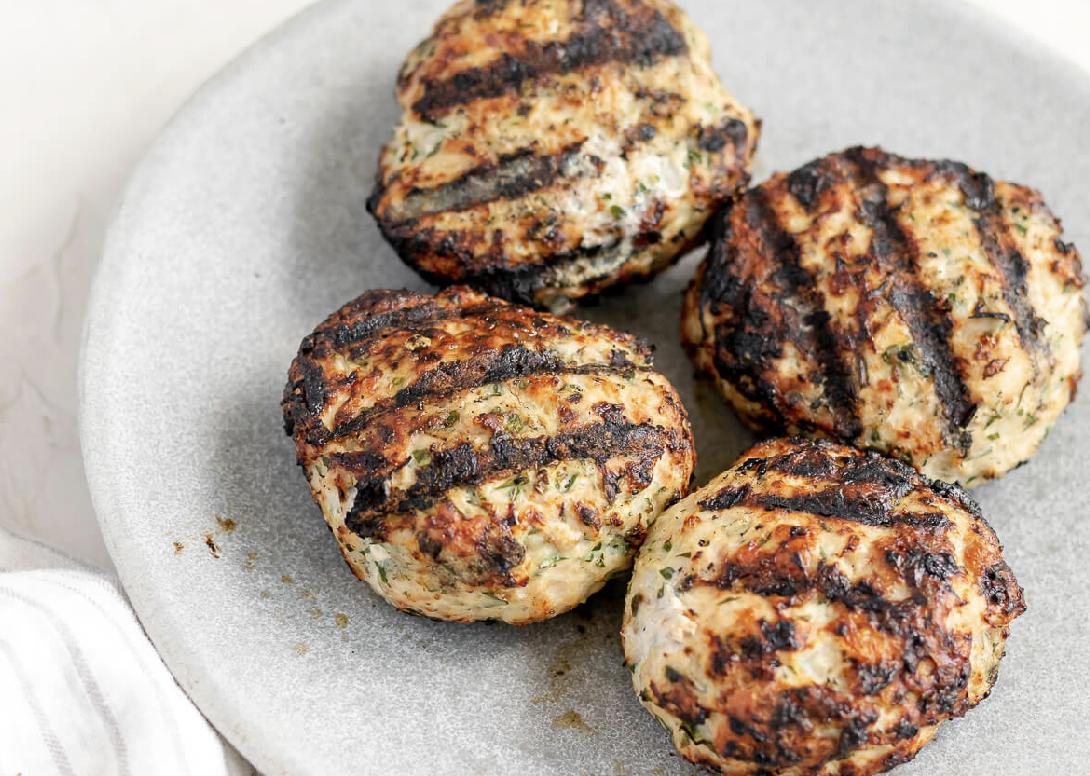
Recipe: Barbecued Harissa Sardines
These small fish are packed with nutrients that can be beneficial in the prevention of quite a few health conditions. Some of these nutrients are known to help prevent heart disease or may protect against certain cancers.
Sardines are sometimes recommended for pregnant women and older adults. They contain calcium and omega-3 fats.
Serves 8
Ingredients:
8 sardines (or mackerel fillets)
1 heaped tbsp harissa paste
extra virgin olive oil
juice of 2 lemons
natural yoghurt, to serve
chopped coriander and parsley (optional)
Method:

Top Tips for Men's Health
The 12th to the 18th June marks Men’s Health Week, and fortuitously end on Father’s Day. Men are notoriously bad at engaging with healthcare and wellbeing, but this seems to be changing. And it’s important that we take care of the men in our lives and ensure that they’re doing ok.
Tragically, suicide is the main cause of death for men and boys between the ages of 5 and 49 – a shocking and desperately sad statistic. Suicide was the main cause of death in boys and younger men even before the Coronavirus pandemic. The social isolation during the pandemic has only made matters worse. 90% of people who attempt or commit suicide have mental health problems. More women than men suffer from depression, but women are more likely to talk about their issues and seek help. Men tend to bottle up their problems and negative feelings – until they can no longer cope. Men’s Health Week is a time when we can encourage men to speak out and seek help.
Another health aspect we need to cover is cancer, in particular prostate and testicular cancer. Although cancers affect both men and women, men are 60% more likely to get the disease and 70% more likely to die from cancer than women. There is much speculation about why that is. The most common cancers in men are prostate, lung and colon cancer – in that order. The most common one – prostate cancer – is a cancer that women cannot get. Cervical cancer in women has declined due to improved screening. Screening for prostate cancer is not (yet) routinely done. One reason for that is that there is still some discussion about how useful the PSA (prostate specific antigen) reading actually is.
Throughout their life, women have a lot more contact with health professionals. Birth control, pregnancy, birth, child rearing and routine breast cancer and cervical screens means that they are in and out of doctors’ surgeries a lot more often than men as a matter of course. This reduces the reservations some may have about talking to medical professionals. It also offers ample opportunity to mention something they have been worried about. Stereotypically, men are more reluctant to make an appointment with a doctor.
The most common cause of death for men between the ages of 50 and 79, however, is still heart disease, an issue the charity does not seem to emphasise very much. The good news is that for males, the death rates from heart disease and stroke have reduced by about 50% since 2001. The bad news is that the incidence of heart disease has barely changed. However, modern medicine has become much better at treating it, so that more people survive for longer. According to the British Heart foundation, 80% of people living with heart disease have at least one other health condition. It looks like in most cases that might be type 2 diabetes. A paper published in the European Heart Journal in 2015 found that 75% of patients with cardiovascular disease have abnormal blood sugar readings.
While deaths from heart disease and lung cancer in men have reduced by 50% and 30% respectively since 2001, there has been an increase in the death rate from Alzheimer’s and dementia of more than 60% and from liver disease by 12%. Alzheimer’s is also the leading cause of death in men over the age of 80.
Liver disease is almost entirely preventable. The most common causes are lifestyle-related: alcohol and obesity (together with hepatitis B, an infectious disease) account for 90% of cases. Alcohol is still the main reason for liver failure, but in recent years there has been a new version of liver disease: non-alcoholic fatty liver disease (NAFLD). At first, doctors often did not believe their patients when they said they didn’t drink – but presented with livers in a state of disease previously only seen in alcoholics. Now we know that something other than alcohol – sugar – can wreak just as much havoc on the liver as alcohol does.
As Alzheimer’s and dementia have been on the rise for decades, years of research have gone into finding out was causes it. Today, Alzheimer’s is referred to by some as “type 3 diabetes”, because here, too, blood sugar increases and insulin resistance has been observed. Although Alzheimer’s is known to have many contributing factors, there is no doubt that sugar is one of them.
The bottom line is that diet appears to play a major role in the leading causes of death among men. Diabetes promotes silent low-grade but long-term inflammation that damages blood vessels, nerves and liver cells. Even suicide, usually preceded by mental health issues, is not exclusively psychological. A healthy diet may not prevent all mental health problems all by itself by any stretch of the imagination, but a diet of ultra-processed food certainly promotes them.
So, if you are going to do just ONE thing to prolong your healthy lifespan it’s this:
Eat real food
Ultra-processed foods have been linked to cardiovascular disease, cancer, non-alcoholic liver disease, and neuro-degenerative diseases – which is code for Alzheimer’s and dementia. We’re not cut out to subsist on man-made food. We evolved to eat natural foods: meat, fish, seafood, eggs, vegetables, fruit, nuts and seeds, herbs and spices. There is very little humans can do to improve on nature – except perhaps cooking (which allowed us to develop a bigger brain) and fermenting (which is not just a handy way to preserve food, but supports the gut).
If you are already eating real food or want to do TWO things to live a long and healthy life:
Cut out sugar and refined carbohydrates
Much of this will have left your life once you started eating real food, but there may be room for improvement. Sugar is detrimental, and all starchy carbohydrates (think bread, rice, pasta, potatoes) ultimately turn into sugar in the process of digestion. How fast that happens and how much they will make your blood glucose rise depends on how processed they are. If you must have bread, pasta, and rice, go for the whole grain versions. Consider cutting them out altogether, because while there are essential fats and essential amino acids (the building blocks of protein), there are no essential carbohydrates. If you never eat pasta again, you’ll live. Probably a longer and healthier life to boot.
If you’re up for even more steps towards better performance, more energy and less bulge, book in for a free 30-minute men’s health mini consultation. You can do that by clicking this link.

Turkey Burgers
Today is World Burger Day! While we often think of burgers as being made of beef, turkey makes an excellent alternative. Turkey is rich in protein, low in saturated fats, and a good source of B vitamins. Turkey is not just for Christmas! This recipe is a real favourite with my clients – hope you enjoy it too.
Makes 4 burgers
Ingredients:
4 shallots, roughly chopped
2 small cloves garlic, crushed
2 teaspoons dried oregano crushed with your fingertips
8 large basil leaves
3 handfuls baby spinach
Zest of 1 lemon
1 tsp coarse sea salt
Pinch of freshly ground black pepper
500g turkey mince
2 tablespoons extra virgin olive oil
Method:

COULD PRACTISING GRATITUDE BE THE ANSWER TO YOUR HEALTH PROBLEMS?
Feeling grateful is more than a nice feeling. The more you feel grateful, the luckier you feel and the happier you are. You’re less stressed and your outlook, more positive. And healthier, too. Who would not want that? Let me explain how gratitude works and how you can tap into it.
First, let’s be clear what gratitude is. It comes from the Latin word gratus, which means "thankful, pleasing." Gratitude is a complex emotion that involves a combination of cognitive, emotional, and behavioural processes. At its core, it involves recognising and acknowledging the good things in your life and feeling a sense of appreciation and thankfulness for them.
“The quality of being thankful; readiness to show appreciation for and to return kindness; a warm feeling of goodwill towards a benefactor.” OXFORD ENGLISH DICTIONARY
“What you focus on expands, and when you focus on the goodness in your life, you create more of it. Opportunities, relationships, even money flowed my way when I learned to be grateful no matter what happened in my life.” OPRAH WINFREY
“Acknowledging the good that you already have in your life is the foundation for all abundance.” ECKHART TOLLE
Here’s proof it works:
There is growing evidence that practicing gratitude can have a positive impact on physical health. Here are just a few handfuls of way.
So, now you know that gratitude is a good thing, I know you’ll want to try it for yourself. Here’s how.
If you’d like to take charge of your health, why not get in touch? You can book a free call with me here.

Recipe: Rainbow Smoothie
'Eating the rainbow' is something my clients here me asking them to do quite frequently! And while it sounds nice, it also does us a lot of good - particularly when we're looking at gut health.
The different pigments in plant foods denote different special chemicals called phytonutrients. Research shows us that phytonutrients can have a positive effect on our gut bacteria, which in turn may help provide us with health benefits. By eating a rainbow of foods each day, we are ensuring we get a variety of phytonutrients and hopefully happy bugs in our gut!
Makes 1 portion
Ingredients:
100g mixed frozen berries – raspberries, blueberries, blackberries
50g spinach
1 satsuma, peeled
1 inch ginger root, peeled and grated
200ml almond milk
1 tbsp ground flaxseed
1 tbsp chia seeds
200ml filtered water (and more, if thinner consistency desired)
Method:
Put all of the ingredients in a high-speed blender and blitz until thick and smooth.
Pour into two glasses and add extra water until it’s the consistency you desire.
If you’re sick of putting up with digestive issues, why not book in for a free 30-minute digestive health mini consultation? You can do that by clicking this link here.
Is your IBS driving you crazy?
Bloating, gassy, cramps, heavy, uncomfortable? One minute you can’t go to the loo and the next minute you can’t get off it.
The likely cause is Irritable Bowel Syndrome (IBS). It’s incredibly common. According to Guts UK, a charity set up to promote awareness of and funding for digestive problems, it affects up to a third of people at some stage or another and it is one of the main reasons people visit their doctor.
Unfortunately, according to the NHS, there’s not a lot you can do. The official view is that it’s a lifelong problem that no one really understands and that there’s no cure for (although over-the-counter medicines can help symptoms). So sorry, move along and deal with it yourself.
As nutrition professionals will tell you, there IS hope. A consultation with a nutrition professional specialising in digestive health will be able to, in the first instance, provide some natural solutions that are likely better than taking over-the-counter medication AND your nutritionist will be able to work with you to find the root cause. This will enable you to get to the bottom of what is causing the symptoms of IBS (excuse the pun), and then you can take steps to fix it.
One of the most common causes of IBS is SIBO (small intestinal bacterial overgrowth), which accounts for 60##plus## of IBS cases. This describes a condition where bacteria manage to grow and thrive in the small intestine. It’s not a question of ‘good’ or ‘bad’ bacteria. There shouldn’t really be many there at all.
It might be that you have a lactose intolerance. This is when your body is not able to tolerate lactose, a type of sugar found naturally in milk and other dairy products, leading to a host of ‘IBS symptoms’. It might similarly be fructose malabsorption. Again, some people are not able to absorb fructose and symptoms are very similar to lactose intolerance.
Dysbiosis is an imbalance in the levels of beneficial (good) and pathogenic (bad) bacteria in the large intestine or colon, potentially caused by the overuse of antibiotics or alcohol, an increase in high sugar diets, and stress.
Or you might have a yeast overgrowth. Simply, the gut environment gets out of balance (due to dysbiosis) such that unwelcome yeast can thrive.
None of these are pressing issues for regular doctors because there is often not the NHS testing or the framework for treatment of these problems. In some cases, digestive problems can be tricky to solve, and it almost always involves a lot of detective work. But if your symptoms are hampering your life in a significant way, I want you to know that there ARE things you can do. Although IBS might be very common, it is not normal to experience the symptoms you do.
What can I do about my IBS now?
There are some simple tricks you can put into practice today and that might make enough of a difference to help you get your life back on track. I’m going to tell you what they are in a moment.
I also want you to consider the degree to which your symptoms bother you. Are you satisfied with just covering up the symptoms and hoping for the best? That might be enough for you. If it isn’t, please book yourself in for a free 30-minute digestive health call to get an idea of what you can do right away and what might be possible for you.
10 ways to improve your digestion
The following suggestions are very basic but surprisingly effective at improving symptoms of digestive distress.
DO
DON’T
If you’re sick of feeling bloated, gassy, crampy, or going to the loo too often (or not often enough), book in for a free 30-minute digestive health mini consultation. You can do that by clicking this link here.
![]()
Please get in touch and find out more - I offer a free 30-minute exploratory call.